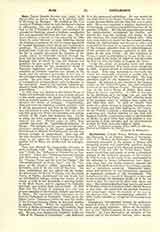

Bustamante, CARLOS MARIA, Mexican statesman and historian, b. at Oaxaca, Mexico, November 4, 1774; d. in Mexico, September 29, 1848. Although constantly concerned in the politics of Mexico, and occupying several very responsible positions during the most trying times of the Mexican Republic until the close of the war with the United States, Bustamante found time and leisure to secure a prominent position in the historical literature of his country. In 1796 he took up the study of law, participated in the attempts to secure independence from Spain, and, when that was finally achieved, opposed the designs of Iturbide to transform the newborn republic into a hereditary monarchy. Repeatedly imprisoned and banished, he was nevertheless appointed to important positions in the Government. The American war was a source of deep grief to him, and he felt so keenly the disastrous results of it for his country that he survived its close only about one year. His historical sketch of that war is a sad record of the decay and disintegration which afflicted Mexico at that time. He writes with the greatest frankness, and unsparingly, about the conduct of the war on the Mexican side. His autobiography, published in 1833, is also valuable as a fragment of contemporary history.
Bustamante distinguished himself by publishing historical works on colonial times, till then in manuscript and partly forgotten. Above all, his publication of the “Historia general de las cosas de Nueva Espana”, by Fray Bernardino de Sahagun of the second half of the sixteenth century, was a service to historical research. It is open to grave criticism, being defective and sometimes slovenly, but it should not be forgotten that it is the first of its kind and was published during a most troubled period of the editor’s life. It must be condemned as unreliable in many respects, and yet it has opened the road to more exhaustive, and hence more valuable, investigations. In addition to the work of Sahagun, Bustamante printed the chronicle of Gomara, the work of Veytia on Tezcuco, the dissertations of Gama on two large Mexican sculptures, and others. To the history by Sahagun he added one of the relaciones of Ixtlilxochitl, selected by him for the passionate spirit which it displays against the Spaniards. Bustamante’s anti-Spanish feelings influence even his scientific publications and detract from their value.
Any modern history of Mexico touches on the life and writings of Bustamante. In addition to the autobiography mentioned (Lo que se dice, y lo que se hate, 1833), and the light shed by his other works, the “Diccionario universal de Historia y Geografia” (Mexico, 1853), contains an exhaustive account of the man. Alaman has written about him in terms of great eulogy, putting in relief especially his private character and the virtues of his domestic life.
AD. F. BANDELIER

